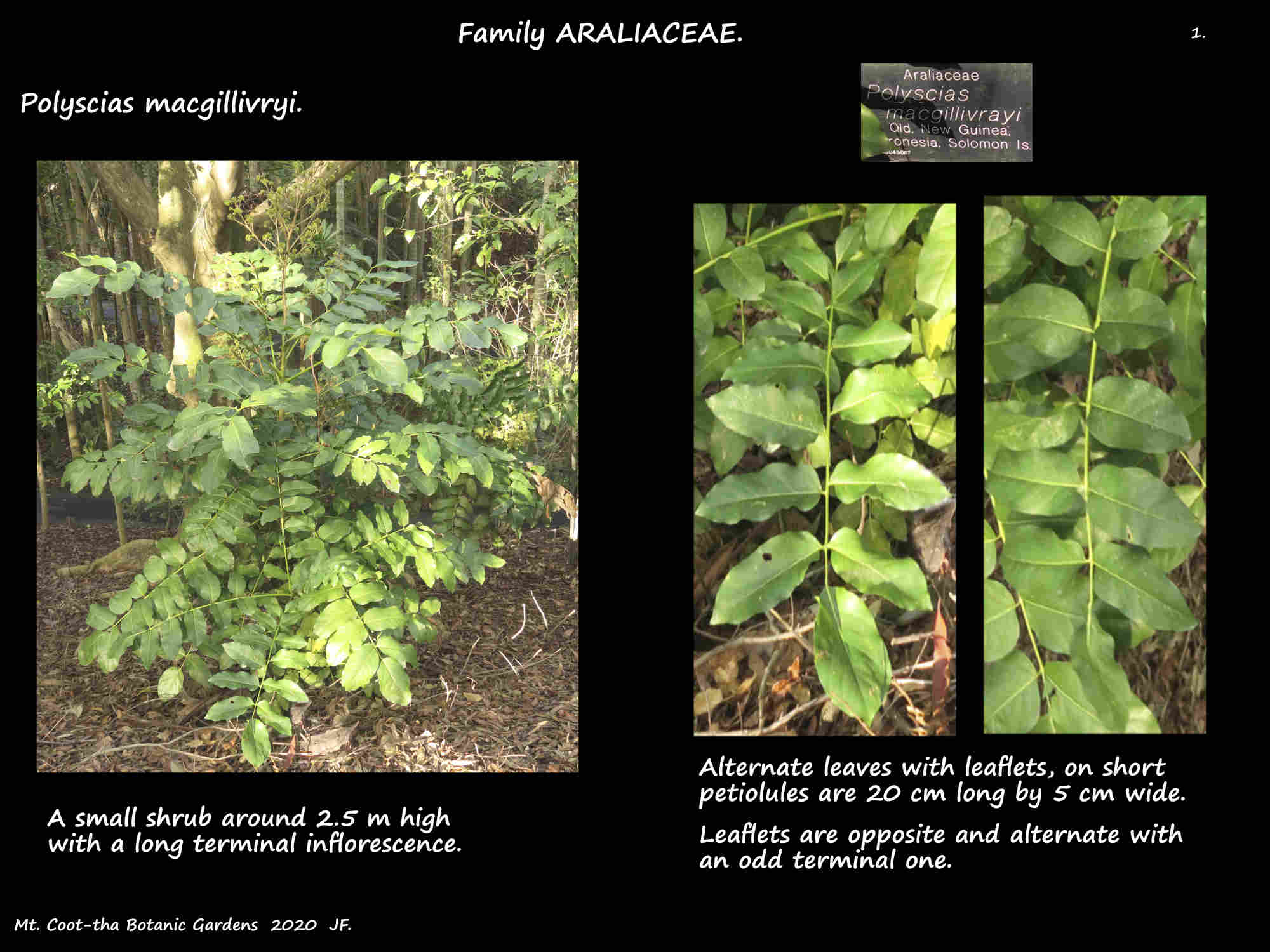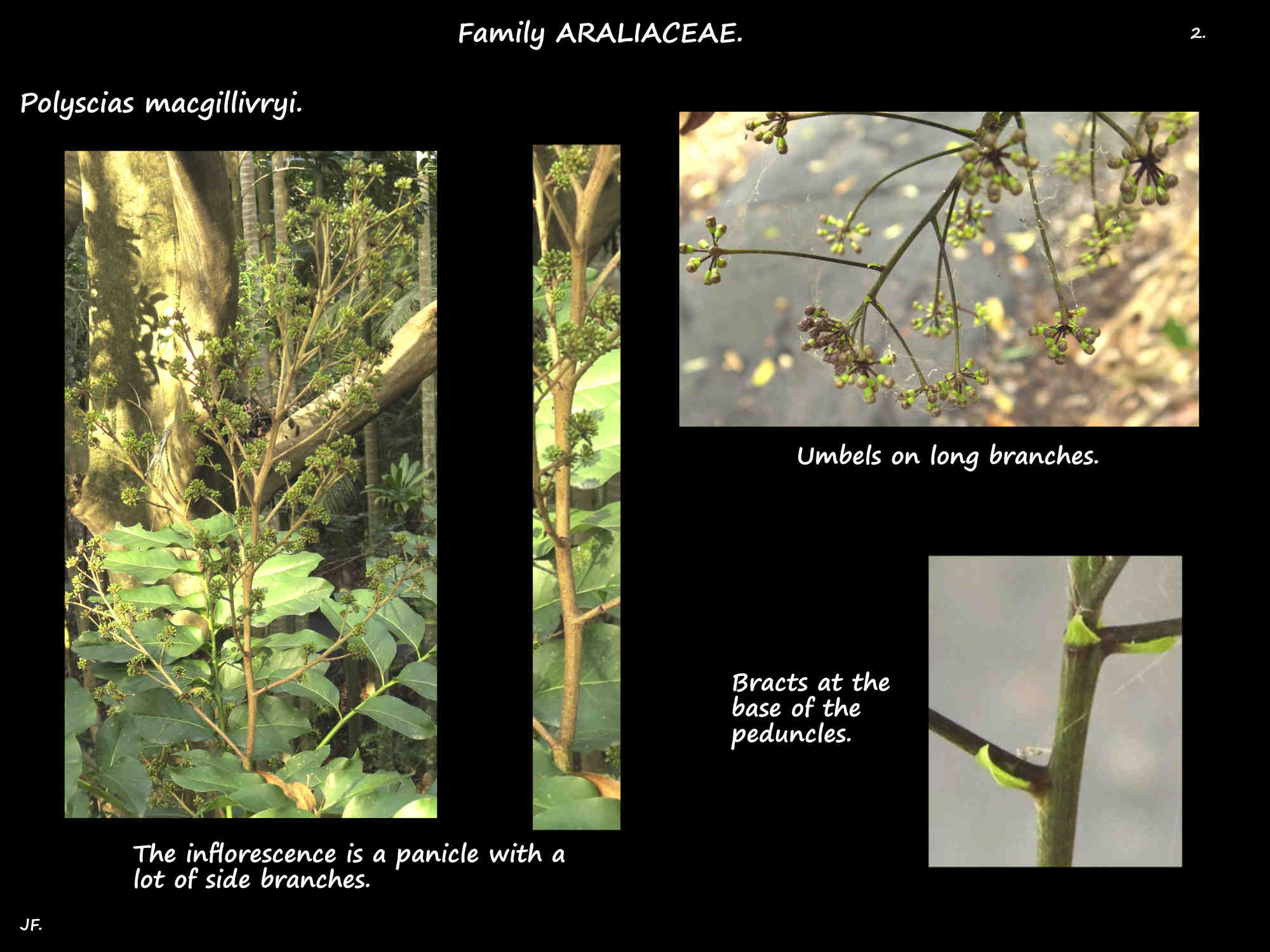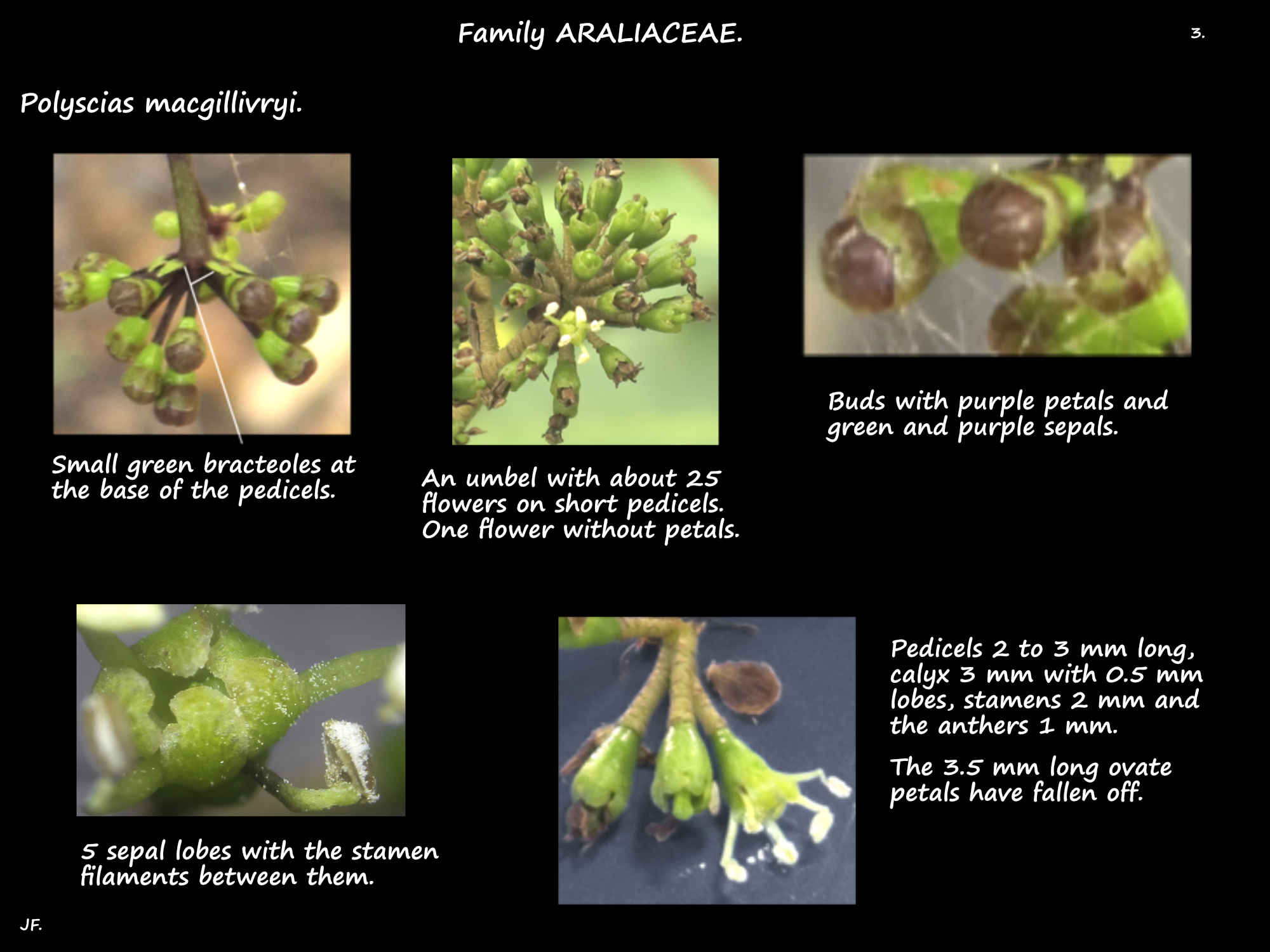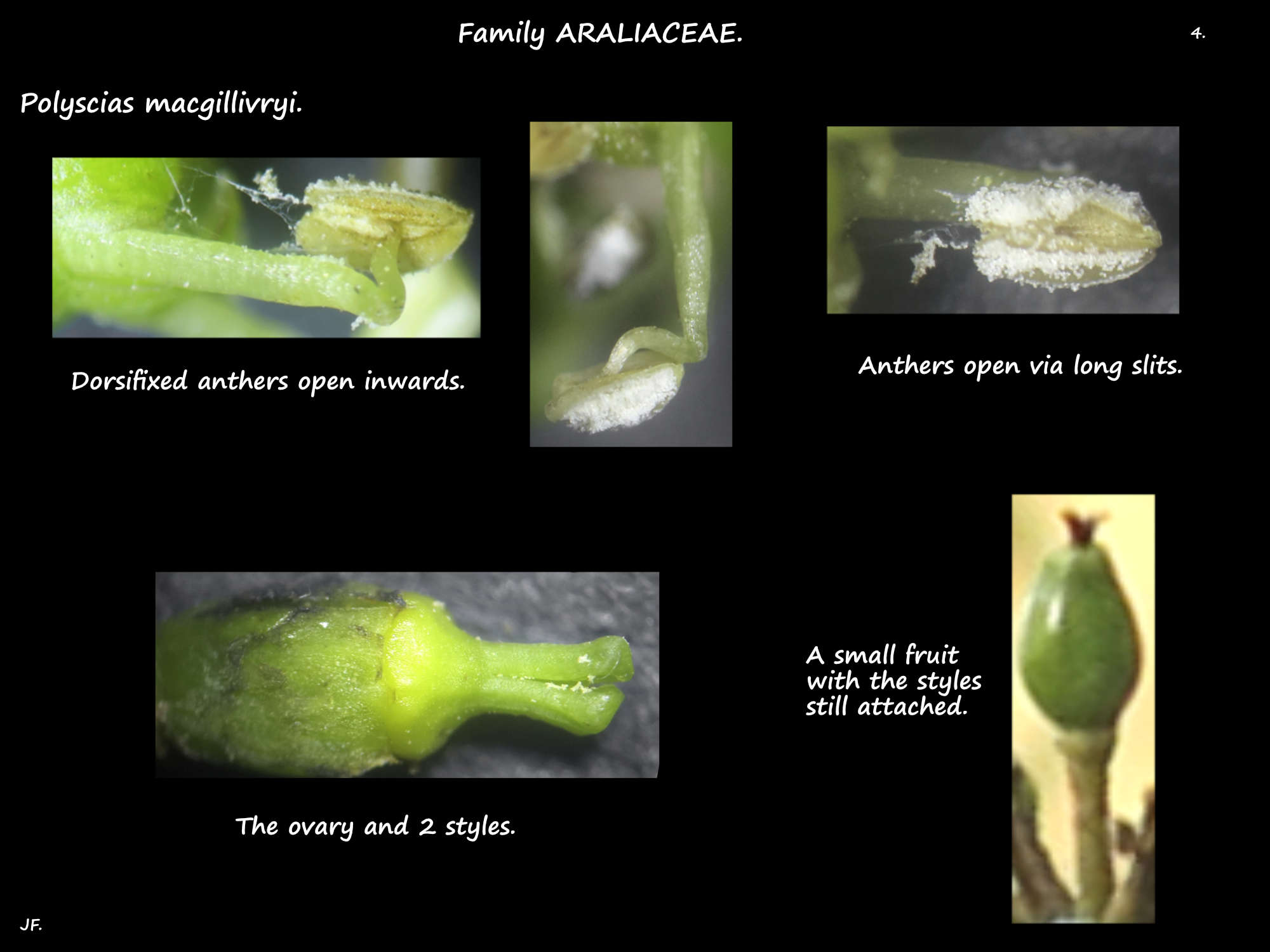Polyscias macgillivrayi.
In Family Araliaceae they are native to N. E. Queensland.
They may be small shrubs but are usually seen as trees to over 30 m high.
The branches are at the top of the trunk.
The alternate, compound leaves can be over 1 m long.
The base of the petiole forms a small sheath around the stem.
The 1.5 cm long stipules at the base of the petioles run down, and are fused to the stem.
Each leaf can have 5 to 8 pairs of leaflets plus an odd terminal one.
They can be up to 28 cm long and 11 cm wide on petiolules up to 2 cm long.
There is a groove on the upper surface of the petiole and the petiolules.
The erect terminal inflorescences are panicles with widely spaced branches.
The branches hold umbels that can have over 20 flowers.
There are small bracts and bracteoles.
The bases of the 5 sepals are fused with 5 rounded green or green and purplish lobes.
The 5 purple petals, up to 2.5 mm long fall off early. (P. elegans also has purple flowers.)
The 5 stamens alternate with, and extend well past the sepals.
The dorsi fixed anthers open inwards via long slits.
The ovary is formed from 2 carpels.
There are 2 free, spreading styles that remain on the fruit.
The fruit are berries around 6 mm long and wide but only 3 mm thick.
J.F.





